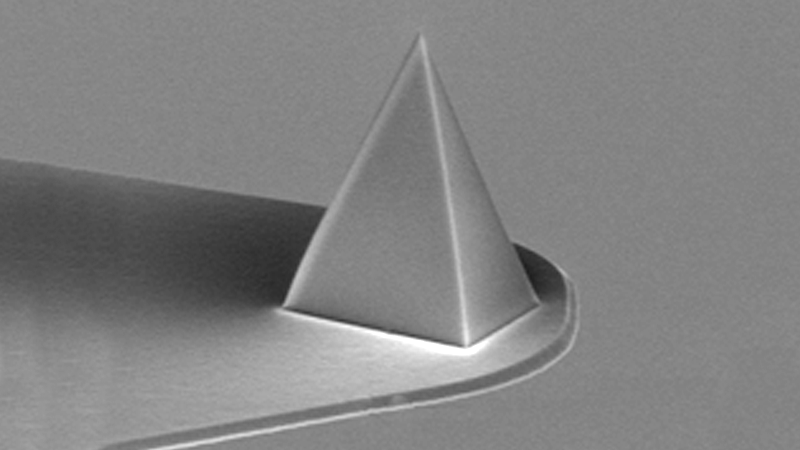

The Fundamentals of AFM Probe Selection [2020]
Watch On Demand
PRESENTATION HIGHLIGHTS
- [00:03:06] Introduction to mechanical properties of thin films and related metrology methods
- [00:06:07] Overview of instrumented indentation for testing nano-scale properties of thin films
- [00:11:32] Challenges of profiling the intrinsic mechanical properties of ultra-thin films
- [00:19:55] Solutions for characterizing the intrinsic mechanical properties of ultra-thin films
- [00:28:36] Bruker's solutions for nano-to-macro scale measurement of thin films and coatings
LIVE Q&A WITH THE PRESENTER
Learn about the biological and materials science applications of AFM and the latest developments in AFM probe design for each application.
For bio applications: Discussion centers around high-resolution AFM probes for visualizing single molecules, cell imaging, and mechanical measurements.
For materials science applications: The speakers begin wwith a disucssion of topography imaging before moving on to nanomechanics and nanoelectrical characterization.
The webinar also highlights the updated Bruker AFM probes website.
Contact us
If you have any questions about our products or services, please contact us. Follow @BrukerNano on Twitter for event, product, and webinar updates.
Presenters' Abstract
The potential, possible, and ideal uses of various AFM probes depend, in part, on their materials, design. and fabrication process; correct—or incorrect—probe selection can have a significant impact on the experimental design and overall success of any AFM-based research.
Atomic force microscopy is a high-resolution form of scanning probe microscope, which involves the scanning of a surface with a mechanical probe. The probe is an important component of a successful AFM experiment.
There are multiple applications of AFM, so it is important to select the right probe for the sample. The materials and design of the AFM probe are in important part on what the probe can be used for. The fabrication process of the probes at Bruker can be highly specialized at different levels. The cantilever design is essential to how the tip will interact with the sample with regards to the stiffness and the frequency. The design of the tip will be discussed on when a sharp tip is appropriate, and when a broader tip may be appropriate, with notable examples for each.
Biological applications will be discussed regarding hydrogels, soft samples, living cells and tissues. Biological molecules will also be discussed with regards to high resolution imaging and single molecule studies. Large radius probes for biological applications will be highlighted.
Materials applications will also be highlighted, with discussions on how to select for nanomechanical and nanoelectrical applications of the AFM probe. NanoDMA pre-calbrated probes will be discussed as the latest development for materials research.
Speakers
Mickael Febvre, Ph.D.
Application Manager, Bruker EMEA
Alexander Dulebo, Ph.D.
Bio Sales Application Engineer, Bruker


